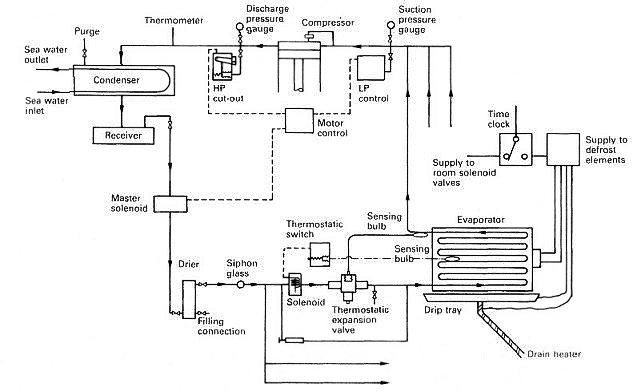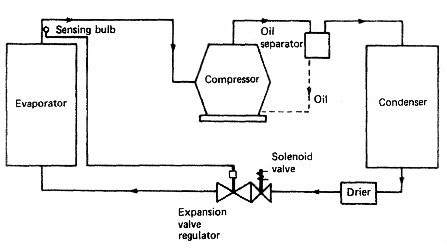
Automatic direct expansion refrigeration system for cargo ships
Refrigeration is a process in which the temperature of a space or its
contents is reduced to below that of their surroundings. Refrigeration of cargo spaces and storerooms employs a system of
components to remove heat from the space being cooled. This heat is
transferred to another body at a lower temperature. The cooling of air
for air conditioning entails a similar process.
Refrigerated cargo vessels usually require a system which provides for various spaces to be cooled to different temperatures. The arrangements adopted can be considered in three parts: the central primary refrigerating plant, the brine circulating system, and the air circulating system for cooling the cargo in the hold.
Refrigerated cargo vessels usually require a system which provides for various spaces to be cooled to different temperatures. The arrangements adopted can be considered in three parts: the central primary refrigerating plant, the brine circulating system, and the air circulating system for cooling the cargo in the hold.



